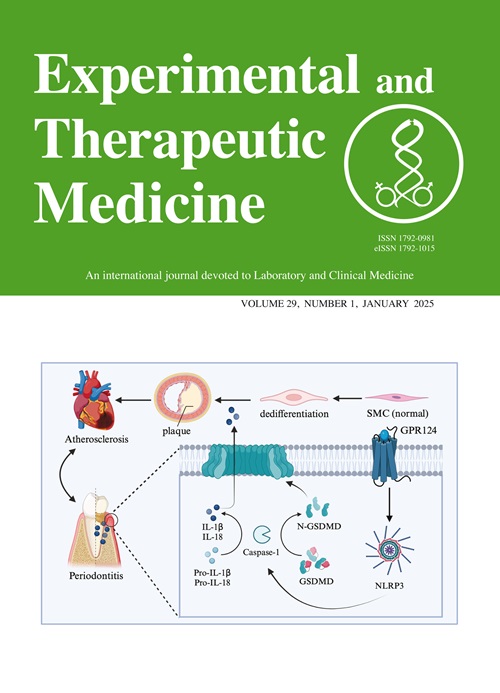Efficacy of enzyme‑induced collagen crosslinking on porcine cornea
IF 2.3
4区 医学
Q3 MEDICINE, RESEARCH & EXPERIMENTAL
引用次数: 0
Abstract
The purpose of the present study was to investigate the effect of a new crosslinking (CXL) method, induced by enzymes, on porcine corneas. Corneal strip (10x3 mm) pairs obtained from 60 fresh porcine eyes were harvested and divided into four groups, Groups A-D. Each pair of corneal strips was incised from the central part of the same cornea; one was incubated in transglutaminase (Tgase) solution (microbial Tgase 2 produced by tissue engineering) and the other remained untreated as a control. CXL strips of Groups A-D were incubated with 2, 1, 0.5 and 0.25 U/ml Tgase solution, respectively at 37˚C for 30 min. After that, tensile strain measurements were performed for all strips. One cornea from each group was chosen randomly for hematoxylin and eosin, and Masson staining to identify histological morphology changes. The elastic modulus of treated corneas of Groups A-D were 6.56±2.93, 4.72±1.29, 5.24±2.13 and 3.48±1.60 MPa (mean ± SD), respectively at a strain of 20%, and had a 66, 43, 36 and -6% increase compared with those of their control strips. Compared with the control strips, the elastic modulus of the treated strips significantly increased in Groups A-C. The central corneal thickness of the treated corneas in Groups A-D were 1.54±0.14, 1.41±0.15, 1.47±0.11 and 1.43±0.13 µm, respectively; however, there was not a statistically significant difference compared with the control group. No reduction in corneal transparency was observed, and no obvious abnormalities were found in corneal morphology. CXL mediated by enzymes can lead to a notable enhancement in the biomechanical characteristics of the cornea while maintaining its structural integrity. Enzyme-induced CXL could be a new generation CXL method for strengthening the cornea.酶诱导胶原交联对猪角膜的功效
本文章由计算机程序翻译,如有差异,请以英文原文为准。
求助全文
约1分钟内获得全文
求助全文
来源期刊

Experimental and therapeutic medicine
MEDICINE, RESEARCH & EXPERIMENTAL-
CiteScore
1.50
自引率
0.00%
发文量
570
审稿时长
1 months
期刊介绍:
 求助内容:
求助内容: 应助结果提醒方式:
应助结果提醒方式:


